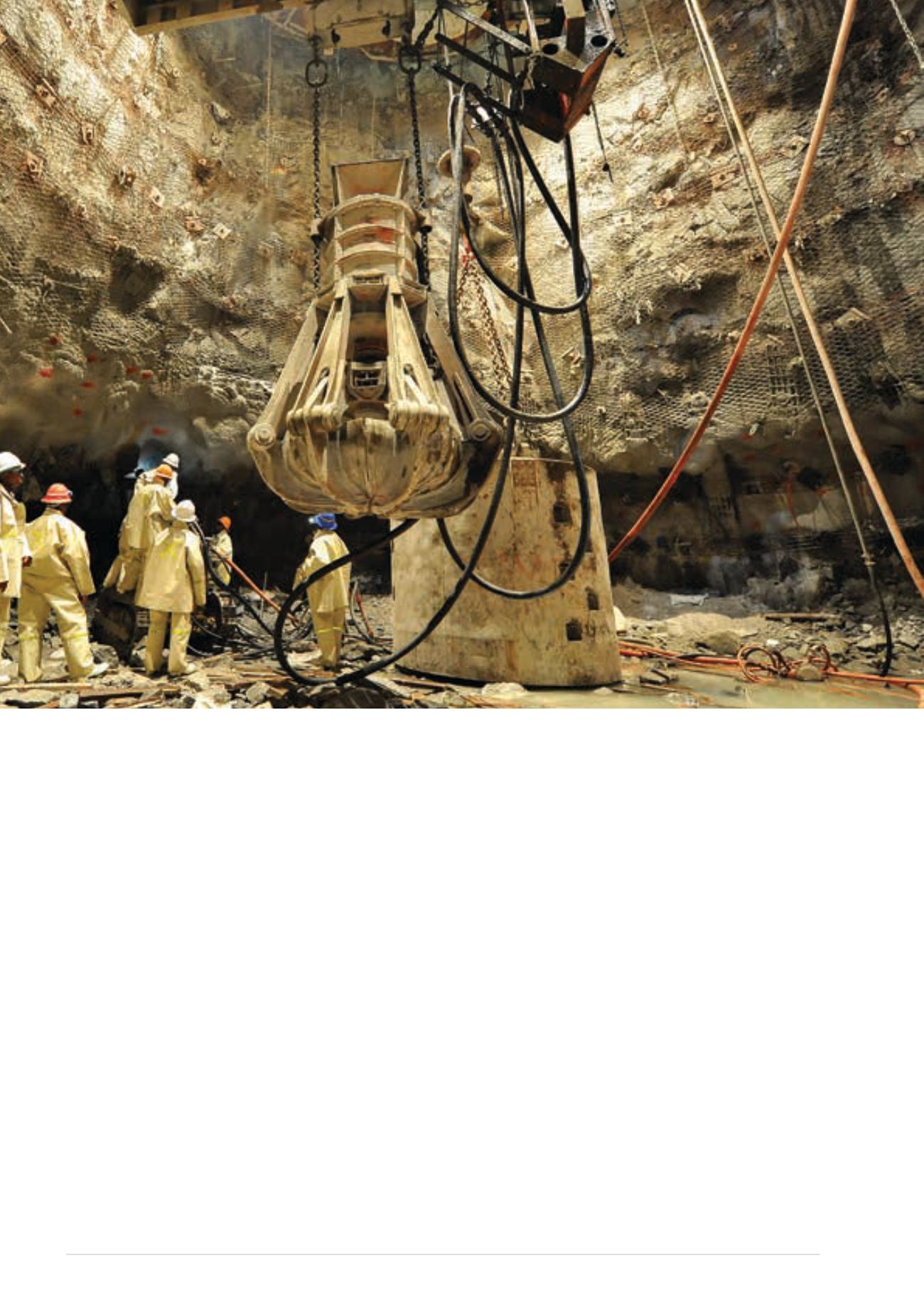
February 2014
MODERN MINING
41
PLATINUM
Shaft sinking in the main
shaft showing the Merensky
600 m level station. The
shaft-sinking contractor is
Shaft Sinkers.
for the Merensky Reef, including a period of co-
extraction as the Merensky Reef depletes.
“The revised design now makes provision for
mining the UG2,” said Velile Nhlapo, General
Manager at Styldrift. “Separate silos – under-
ground and on surface – have been designed for
this purpose. The UG2 needs to be transported
to the concentrator separately from Merensky,
then blended.”
Nhlapo said a full feasibility study has
been completed into the mining of UG2 as an
expansion project to fill the 50 000 tpm excess
hoisting capacity designed into the shaft. “This
study concluded that pursuing the mining of
the UG2 at this time would possibly compro-
mise the success of the Merensky ramp-up
and should only be considered again when the
Merensky ramp-up is well under way,” he said.
While the replacement of Merensky by
UG2 ore will only take place from when the
Merensky orebody starts depleting in 2037,
mining of UG2 as a top-up to the Merensky
could be done at any time during the life of the
Merensky mining programme, said Nhlapo.
The orebody lends itself to a combination of
mechanised bord-and-pillar mining and con-
ventional breast stoping. The trackless mining
sections will each comprise 13 panels and 13
pillars. Regional pillars are designed on dip
and, where possible, to coincide with geologi-
cal losses. The primary extraction layout will
see 8 m bord widths (down from the original
design width of 13 m) separated by pillars 8 m
wide and 8 m in length.
In an innovation planned to save elec-
tricity and water while reducing capex and
costs, Styldrift will employ hand-drills using
high-pressure water in those stope panels not
suitable for mechanised mining.
“The drills are driven by high pressure water
from power-packs situated in the crosscuts,”
Nhlapo explained. “We have developed the
term ‘hydro-pack drilling’ to differentiate this
system from the normal hydro-power driven
by potential energy gained from the depth of
a shaft.”
He said this system was chosen over the
normal compressed air, hydro-powered and
electrical systems based on a comparative study
that considered capital expenditure, electricity
consumption, reticulation costs, operating costs,
productivity and maturity of the technology.
“While the original hydro-pack system
involved substantial amounts of water being


